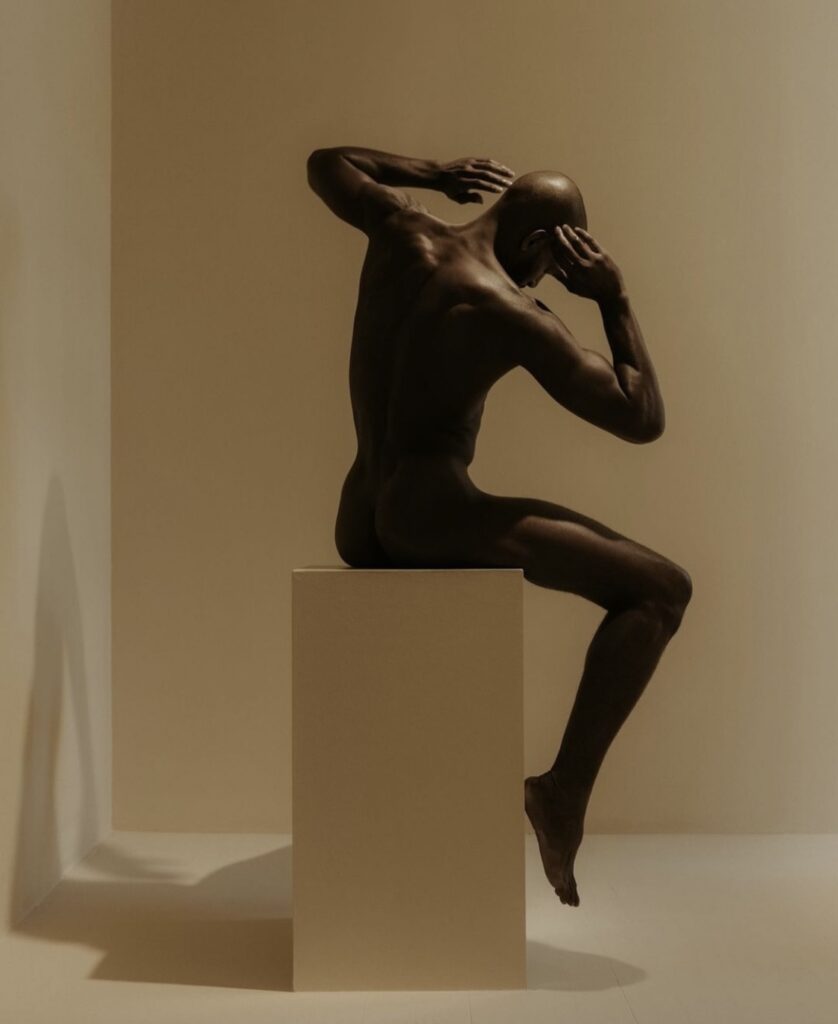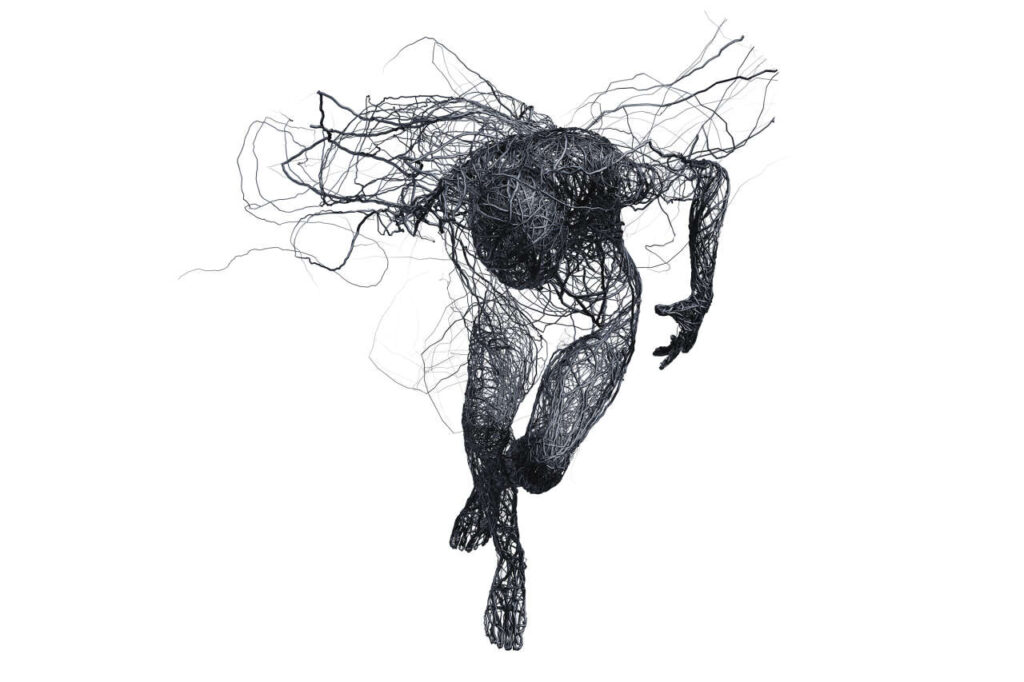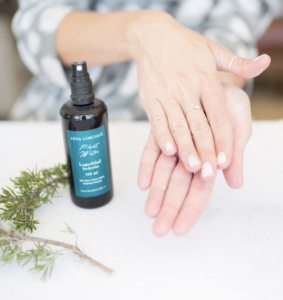
(Photo credit: Michael Oliver Love)
My first encounter with the term “fascia” was during my mother’s tai chi lessons, which she conducted for her weekly classes. Initially, I had a vague understanding of it, perceiving it as some obscure connective tissue, perhaps a variation of cartilage. However, whatever it was, I soon learned that ancient Chinese physicians and yoga instructors recognized its significance over 2000 years ago. They were well aware that the state of our fascia directly impacted our overall health.
My reconnection with the concept of fascial health occurred when I delved into the study of lymphatic systems and began taking courses to understand how this intricate system worked in harmony with our bodies.This year I truly became more fascinated than ever before on this subject matter. So lets get into it. What is fascia and why can you, benefit from knowing about this and how to keep it healthy?
So what is fascia?
Fascia is made up of sheets of connective tissue that is found below the skin. These tissues attach, stabilize, impart strength, separate muscles, and enclose different organs. Ever looked at meat in the butcher and seen the white film that surround muscle? YUP- we’ve got the exact same thing. The average human body has roughly 20 kg of fascia.
Fascia is the material that provides structure, separation, and connection throughout the body for every type of tissue and every system.Lets imagine that fascia would be the framing and foundational aspect of a building.

The lymph can be considered a part of the greater fascial network. Fascia, of course, houses the lymph system as well. Because the lymph has no “mechanical” pump (like the blood has the heart to move it about the body — the heart is no longer considered a pump by some anatomists; it’s more like a twisting, pressurized vortex), the lymph fluid relies on the fascia to distribute and move it about the body.
Fascia is our greater fluid distribution network of the body — the lymphatic system or the lymphatic vessels are a specialized aspect of the greater fascial network. The lymphatic system is essentially the internal pumps that transport fluid and waste around our body.
So why should we even care about Fascia health?
When fascia becomes densified, as a result of injury, disease, overuse, lack of use, or inflammation, it can compress lymph vessels (think about a kinked or smooshed garden hose), causing roadblocks within the fascia matrix that prevent lymph fluid (and all fluids) from flowing easefully and efficiently. Therefore, we want to improve the health and pliability of our fascia so that our lymph can flow more easily, which in turn helps to keep our immune system healthy and our tissues nourished.
Ancient Eastern philosophies praised the importance of fascia because even without modern technology, they knew the two were interconnected. To read more about the Lymphatic system.
So is the lymph (and the blood for that matter) a part of the fascial network? Some scientists argue yes. In 1932, Danish doctor Emil Vodder and his wife, Dr. Estrid Vodder, proposed the alternative medicine practice of lymphology, noting that patients who were sick had swollen lymph nodes. The Vodders began to study the lymph system and developed a specialized massage, aka manual lymphatic drainage technique (MLD), to stimulate lymph flow.
Think of the fascia as our thermodynamic fluid and heat transportation system. Once the interstitial fluid is within lymph vessels, it is then described as lymph fluid. And just as the lymph system is reliant on the fascia to provide structure, the fascia is reliant on the lymph to bring nutrients to the tissues. The lymph fluid sends biochemical and hormonal signals, and lubricates and nourishes the fascia, as well as moves waste. The liquid lymph transports messages for the “solid” fascia.
Sitting can have a significant impact on lymph flow and cause densified fascia. Many lymph nodes exist in the inguinal crease, between the torso and the thigh. Dense fascia can accumulate in the thighs and the hips, decreasing lymph flow.
Every time you move your body, you heal
To put it simply, our lymph movement is stimulated when we move our bodies. Specifically, lymph vessels, found in our loose fascial tissues, move fluid when we contract our muscles, and as we move, lymph capillaries recover fluid from our deeper fascial spaces. Therefore, if we move our bodies, we engage our fascia, creating our own pump; then, we can target our deep lymphatics as well as the superficial.
Moving our fascia and muscles squeezes the lymphatic vessels to move the fluid, acting like a low-pressure hose. Lymph fluid can also be moved through the lymph vessels via diaphragmatic breathing, the nervous system activating the soft muscle tissue that lines the vessels and movements of the organs, exerting pressure on the lymphatic walls.

The Trifecta! Fascia, Lymphatic and Nervous System
Yet another captivating subject I’ve ardently delved into is the nervous system. It’s truly awe-inspiring how this entire ecosystem collaborates seamlessly. Every system and body part intricately connects and impacts the others.
When the nervous system is in a parasympathetic state ( rest and calm) , it causes the vessels to dilate, making the flow of fluid more efficient, therefore increasing the amount of waste elimination. When the nervous system is in a sympathetic state (stress response) this can freeze or slow down the lymph. This is when we see inflammation.
Just as the lymph system is reliant on the fascia to provide structure, the fascia is reliant on the lymph, which sends biochemical and hormonal signals, and nourishes the fascia. The liquid lymph transports messages for the “solid” fascia.
How can I take care of my Fascia?
- COLLAGEN- type I collagen is the main type accounting for 90% of the human body’s collagen, fascia contains an array of collagen type. So get that collagen in and be discerning of the brands and quality type.
- MOVEMENT- The moment we move our bodies, we activate the lymphatic pumps, blood circulation and muscles. Any movement will prevent stagnation and the hardening of the fascial fibres. Whether its a yoga class, tai chi, swimming, a gym workout or even a WALK. Any movement is the foundation point.
- Manual Lymphatic massage – Since the lymphatic pumps cannot pump themselves, they thoroughly rely on movement, breath work and physical manipulation to effectively drain. One of my favourite NON-negotiables is lymphatic drainage massages. Either done by myself ( I will do a follow up on the main points and techniques I have been taught and learnt on my journey).
- Breathwork– Breath also plays a vital role in getting the lymphatics system moving. The faster your lymph moves, the lighter your body feels, and the faster you rid your body of mutated cells and cellular debris. Especially pranayama breathwork. Holding your breath for long periods which occurs during stress, concentration and due to restricted fascia over your lungs and chest can often feel like someone is standing on it. Think about all the muscle involved during breathing. The diaphragm, the intercostal muscles, abdominal and neck and chest muscles.
Whether its a cold shower, steam, sauna, your favourite song blasting in the kitchen whilst eating a roast chicken over the counter. Selfcare time and adding that extra 5min of dry brushing in the morning or before your shower. Skinny dipping in a lake or ocean! EVERY single thing will impact and help your body flow. Remember the toaist quote I used in my Tai chi article ( here it is) – flowing waters don’t stink. Stagnation cannot occur in bodies that are active.
Happy moving my lovely reader,
With love, Vie xxx


